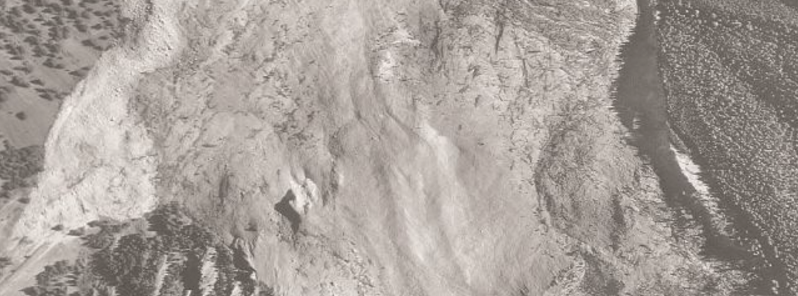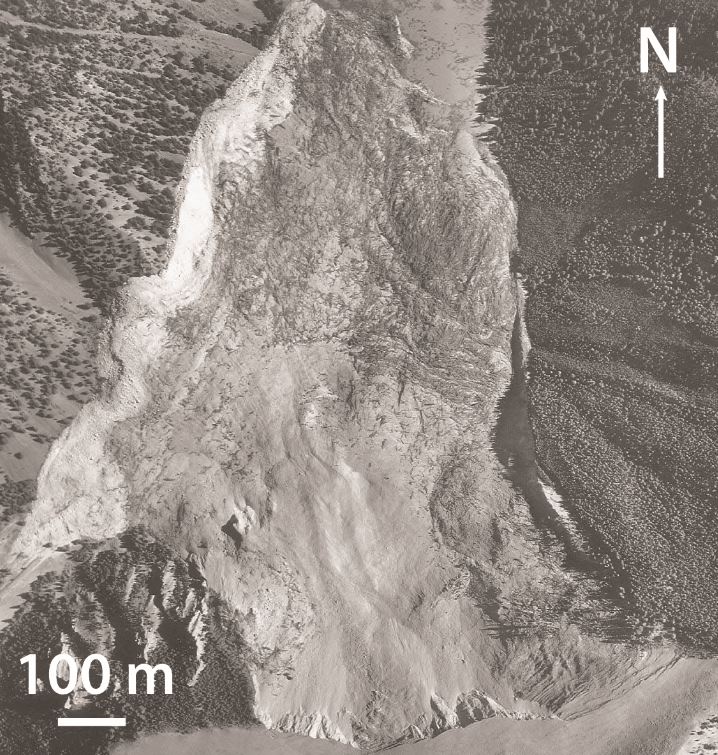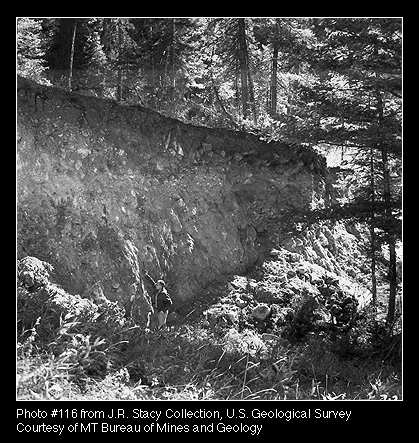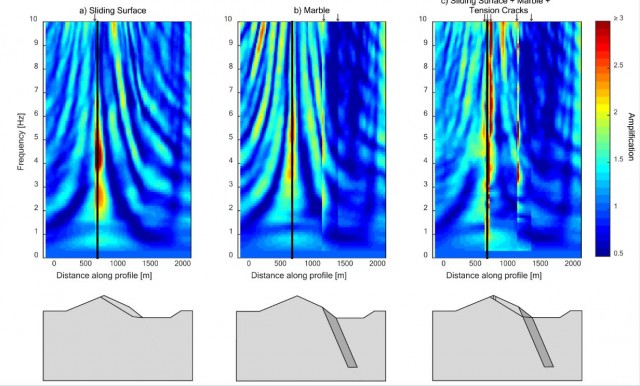The role of geomorphic and seismic processes in occurrence of massive landslides

The scientists have conducted an investigation aimed at understanding how the long-term effects of seismicity on rock slopes and their interaction with geomorphic processes induces landslides. In the case study of the massive 1959 Madison Canyon Slide in Montana, US, researchers demonstrated that long-term seismic and geomorphic damage is important, and often neglected mechanism responsible for bringing a slope to failure.
1959 Madison Canyon Slide is considered the most devastating secondary hazard of the M7.5 Hebgen Lake earthquake. The earthquake, also known as the 1959 Yellowstone earthquake, occurred on August 17, in southwestern Montana. The consequential massive landslide blocked the flow of the Madison River, and at this time, the Quake Lake was created. 28 people died in the event.
Aerial photograph of the Madison Canyon Slide (headscarp in the South). Image credit: U.S. Geological Survey
The landslides triggered by the earthquake dumped 80 million tonnes (40 million cubic yards) of rock, mud, and debris into the valley and induced hurricane-force winds strong enough to toss cars.

The earthquake formed numerous new fault scarps. The Red Canyon scarp located north of Hebgen Lake was the largest, 22.5 km (14 miles) long and up to 6.4 m (21 feet) high. Image credit: J.R. Stacy Collection, USGS/MT Bureau of Mines and Geology
New study
In order to study the often neglected mechanisms, the experts have combined geotechnical survey, long-range terrestrial digital mechanics, engineering geomorphology mapping and 2D numerical simulations in an integrated approach to understanding the conditioning factors, mechanics, kinematics, and evolution of the event and metastable rock slopes in general.
The rock mass and discontinuity properties at the site have been estimated by utilising field and photogrammetric surveys, and laboratory tests. The results showed the landslide was not controlled by the discontinuity sets. Instead, the composite surfaces incorporating multiple discontinuity sets seemed to have acted as the main rear and lateral release surfaces.
Engineering geomorphology mapping aided in the delineation of ten landslide compartments or blocks within the deposit, as well as compressional and extensional zones, indicating how the rock mass failed. Post-event debris slides and rockfalls, as well as anthropic modification of the landslide deposits, were included in the evolution of the event, based on multi-temporal aerial images. Geomorphic processes such as undercutting of the marble unit at the base of the slope, gully incision, and weathering are thought to be relevant to slope failure.

Amplification field plots for three discontinuity geometries at Madison Canyon. Warm colours represent areas of high amplification. These maximum amplification zones correspond to locations where compliant fractures intersect the model surface, indicating their importance. Image credit: Wolter et al, 2015 via AGU.org
Preliminary seismic modelling highlighted the role of pre-existing compliant fractures in amplifying seismic waves, particularly at the crest of the slope. Topographic amplification was shown to be less critical. Simulation of multiple earthquakes in the models indicate the significance of seismic fatigue in slopes, leading to failure.
The scientists have been able to reconstruct a chronology of events at the Madison Canyon site, from the development of initial tension cracks at the crest of the slope and the cumulative damage of the rock mass to the triggering of the catastrophic failure and subsequent evolution of the deposits.
Research results imply that long-term seismic (earthquake) and geomorphic damage are important, yet often neglected, mechanisms in bringing a slope to failure and that the seismic “past” of the slope (i.e., past earthquakes damaging the slope) may have had a significant impact on stability. Topographic amplification of seismic waves appears less critical than damage amplification related to pre-existing and seismically induced discontinuities and the ability to determine reasons for the exact location of this landslide (topographic, geomorphic, mechanical, and seismic effects) contributes to the understanding of slope behaviour.
References:
- "Investigation of Geomorphic and Seismic Effects on the 1959 Madison Canyon, Montana, Landslide Using an Integrated Field, Engineering Geomorphology Mapping, and Numerical Modelling Approach" – A. Wolter, V. Gischig, D. Stead, J. J. Clague – Rock Mechanics and Rock Engineering (2015) – DOI: 10.1007/s00603-015-0889-5
- How do geomorphic and seismic processes cause large catastrophic landslides? A case study in Montana, USA – The Landslide Blog – AGU (accessed February 22, 2016).
Featured image: Aerial photograph of the Madison Canyon Slide (headscarp in the South). Image credit: U.S. Geological Survey

Commenting rules and guidelines
We value the thoughts and opinions of our readers and welcome healthy discussions on our website. In order to maintain a respectful and positive community, we ask that all commenters follow these rules.